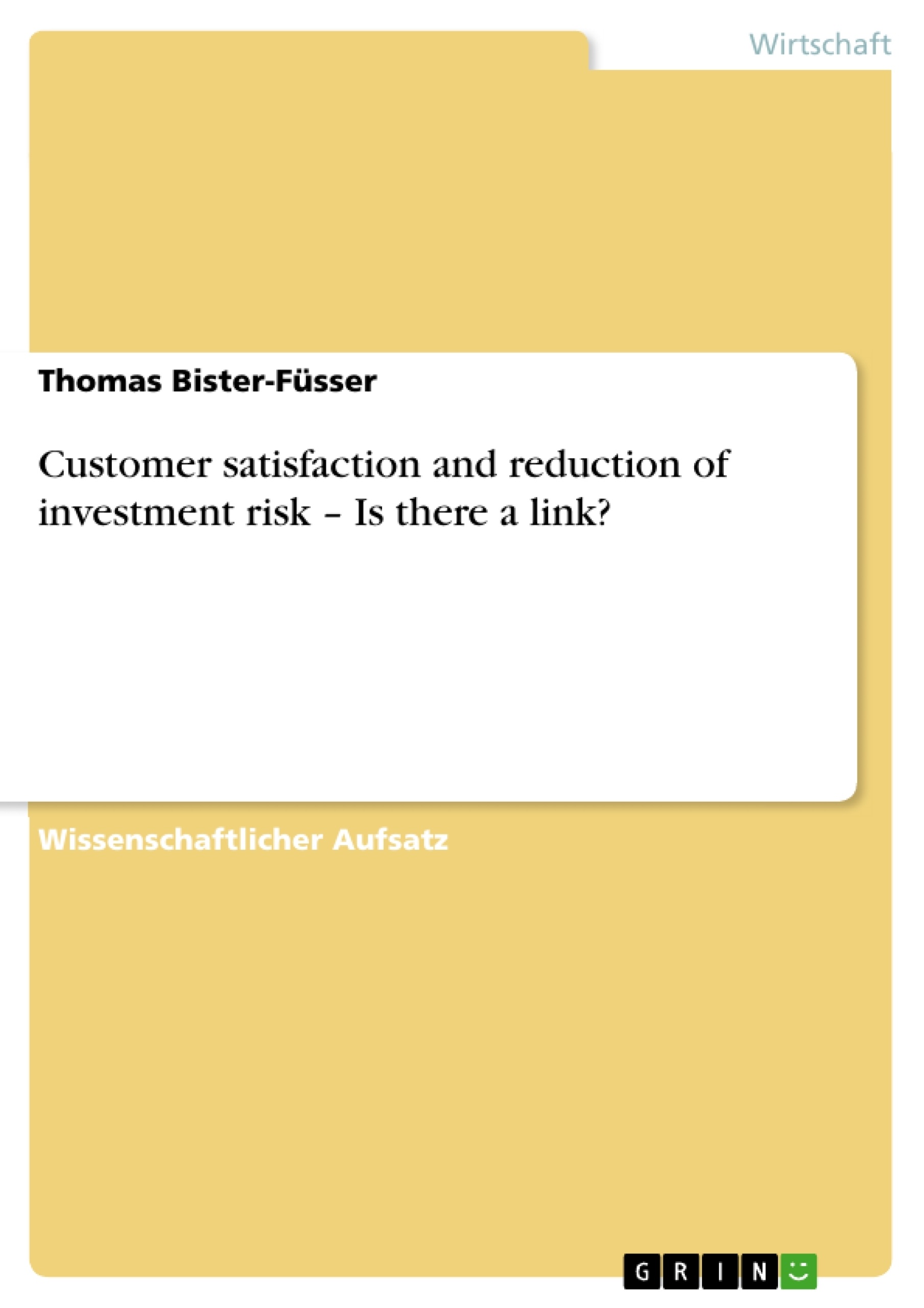It is assumed that investors calculate the risk of their investments. It is further assumed that investors base their investment decision on sound information. Finally, it is assumed that investors diversify the risk of their investments by building investment portfolios. It is the classical economic theory that makes these assumptions. Classical economic theory is inhabited by rational actors and efficient markets and by Equilibria of various kinds that are always established between supply and demand. However, past decades have witnessed an erosion of the rational actor model, mainly because actors did not appear to behave as predicted by classic economic models. Soon after ruptures emerged in the surface of classical theory, theoretical arbitrageurs started to use these ruptures to their own advantage. They introduced ideas of bounded rationality, ideas of actors depending more on situations than on sound reasoning and ideas of a variety of variables influencing actors decision-making process. With respect to investment decisions an entirely new branch of research and theoretical modelling emerged: behavioural economics. Behavioural economics are based on the assumption that differences between predictions of actors’ decisions derived from the classical model and actual behaviour are too big, too systematic, and too widespread to be neglected. The new wind in economics and finance stresses situational factors for investment decisions in general and perceptions of risk in particular. Accordingly, risk is no longer an objective characteristic of investment decisions that can be calculated, but risk is a manifold entity that consists of a diverse range of elements depending of actors’ perception of situational variables. All these elements have one thing in common, they share a propensity providing risk-relief to actors. Accordingly, anything able to reduce risk in the eyes of (a rational) investors will be added to the portfolio of risk reduction measures. Quite obviously, customer satisfaction can lessen the burden of investment risk in two ways, by either being a matter of personal experience or by providing overall information about investment risks. It is necessary to provide a workable definition of customer satisfaction. Finally, it is necessary to provide the missing link between (perceived) risk, customer satisfaction and investment decisions.
Inhaltsverzeichnis
- 1. Introduction - Investment risk and customer satisfaction: an not all too obvious relationship
- 1.1. Introduction - Investment risk and customer satisfaction: an not all too obvious relationship
- 2. Risk and perceived risk
- 2.1. Risk and perceived risk
- 3. Customer satisfaction
- 3.1. Customer satisfaction
- 4. The missing link: customer satisfaction and perceived risk or purchase
- 4.1. The missing link: customer satisfaction and perceived risk or purchase
- 5. Conclusion: About risk, investment and customer satisfaction
- 5.1. Conclusion: About risk, investment and customer satisfaction
- 6. References
- 6.1. References
Zielsetzung und Themenschwerpunkte
Diese Arbeit befasst sich mit der Frage, ob und inwieweit Kundenzufriedenheit dazu beitragen kann, das Investitionsrisiko zu reduzieren. Dabei werden die klassischen Annahmen der Wirtschaftstheorie über rationale Akteure und effiziente Märkte in Frage gestellt und die Bedeutung situativer Faktoren für Investitionsentscheidungen im Vordergrund gestellt.
- Die Rolle der Kundenzufriedenheit als Risikominderungsfaktor
- Die Beziehung zwischen wahrgenommenem Risiko und Kundenzufriedenheit
- Die Bedeutung von Verhaltensökonomie für das Verständnis von Investitionsentscheidungen
- Die Herausforderungen und Chancen der Risikominderung durch Kundenzufriedenheit
- Die Bedeutung von subjektiven Risikoeinschätzungen
Zusammenfassung der Kapitel
Das erste Kapitel führt in die Thematik ein und beleuchtet die klassische ökonomische Sichtweise auf Investitionsrisiko und Kundenzufriedenheit. Es wird deutlich, dass die klassische Theorie von rationalen Akteuren und effizienten Märkten in der Praxis oft nicht zutrifft.
Das zweite Kapitel untersucht den Begriff des Risikos und des wahrgenommenen Risikos. Dabei wird die Bedeutung von Erfahrung, Informationen und subjektiven Wahrnehmungen für die Risikobewertung hervorgehoben.
Das dritte Kapitel beschäftigt sich mit dem Konzept der Kundenzufriedenheit und analysiert die verschiedenen Facetten dieses Begriffs.
Das vierte Kapitel stellt den Zusammenhang zwischen Kundenzufriedenheit und wahrgenommenem Risiko her und analysiert, inwieweit Kundenzufriedenheit als Risikominderungsfaktor dienen kann.
Das fünfte Kapitel fasst die Ergebnisse der Arbeit zusammen und gibt einen Ausblick auf die Bedeutung von Kundenzufriedenheit für die Risikominderung in der Zukunft.
Schlüsselwörter
Kundenzufriedenheit, Investitionsrisiko, Verhaltensökonomie, wahrgenommenes Risiko, Risikominderung, subjektive Risikoeinschätzung, situative Faktoren, Entscheidungsprozesse.
- Citation du texte
- Thomas Bister-Füsser (Auteur), 2011, Customer satisfaction and reduction of investment risk – Is there a link?, Munich, GRIN Verlag, https://www.grin.com/document/170282



